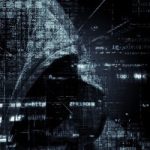Naval Postgraduate School Professor & Team Focusing on Quantum Sensors to Track Motion Underwater or in Space

(DVIDS) Naval Postgraduate School (NPS) Physics Professor Frank Narducci and his team of graduate and post-doctoral students currently focus their efforts on quantum sensors that could detect and track platform motion in the absence of GPS capabilities, such as underwater or in space.
Traditionally, submarines use onboard inertial sensors to determine their rotation and acceleration underwater. Often the submarine must come up to check where its classical sensor says it is with where the GPS pinpoints it. Often, the location where the submarine thinks it is, and where the GPS says it is, are not exactly the same.
“If we have sensors that have low error and low drift, [the submarines] won’t have to come up as often,” Narducci explains.
This would be beneficial for fuel, time and covert purposes. Quantum sensors use atoms instead of photons, and atoms are more sensitive to changes due to their higher mass.
There are two main quantum sensing research projects Narducci is mentoring along. The first is about improving the overall accuracy of the sensor, which National Research Council (NRC) post-doctoral researcher Jefferey Lee is looking into.
The other project is the effort of actually building a quantum sensor. The sensor requires two parallel atomic beam atom interferometers to differentiate between rotation and linear motion. A previous Ph.D. student created one laser, and now Royal Canadian Navy Lt. Cmdr. Darryl Gervis is building the other.
Many of the baseline tools used in Narducci’s lab are based on research done by Dr. William Phillips, who works at the Joint Quantum Institute of the National Institute of Standards and Technology (NIST)’s, and who lectured at NPS on Quantum reformulation of the Metric system during a recent SECNAV Guest Lecture (SGL).





















